A thoughtfully crafted succession plan is crucial for any business that wants to stay afloat when its founders are ready to retire.
Building a successful business is hard enough. Ensuring it continues to thrive when you’re gone is a separate hurdle, one that can only be surmounted with strategy and preparation. Creating and enacting a succession plan — a roadmap for passing leadership roles and responsibilities on to one or more employees — is the surest way to “future-proof” all types of companies, from the smallest to the largest and across the spectrum of industries.
Statistics from national studies bear this out. They show that 60 percent of executives fail within the first year and a half of being promoted or hired due to no or poor succession planning. And without being intentional about passing on experience and expertise, when family-owned businesses reach second-generation leadership, they have a 60-percent failure rate; the third generation ends up shutting the doors at the staggering rate of 90 percent.
We asked two local business owners for their succession plan insights — Jeff Barranco, part-owner of Chappy’s Deli, who alongside his two siblings, is helping run the booming restaurant business his dad and uncle started, and Josie Russell Young, President of Russell Construction, the company her father founded.
Why You Need a Succession Plan
According to both Barranco and Young, a formal succession plan (not just a vague “we hope this happens” wish list) is a must for any business today and is particularly key for family businesses. “We have five locations of Chappy’s, and it takes a village to run this business,” said Barranco. “We have almost 350 team members, so we have to make sure this stays strong and steady for them; it’s their livelihood.” Young agreed. “We did a succession plan for me to step into this, and
we are now looking at succession planning for other roles throughout the company,” she said. “We know it’s essential for company longevity.”
Succession Planning’s Big Benefits
Capturing a Wealth of Knowledge: “I was handling front-of-house duties, but now I’m transitioning into what my dad does, the financials, connecting with our suppliers, etc., so I have feet in both areas now,” Barranco said. “That’s a key part of our succession plan, ensuring we hold onto all the knowledge my dad, my uncle, and other longtime employees have gained and built into this business.”
Ensuring Business Continuity and a Smooth Transition: When leaders or managers are disconnected from a business’ day-to-day operations (due to planned retirement or an unforeseen incident), the bottom line is in immediate danger if there’s no strategy to fill the gaps. “A strong succession plan is a must to help ensure the sustainability of an organization,” Accountant and Warren Averett’s Montgomery Office Managing Member Sandy Coaker said. Young noted how working side-by-side with her dad prepared her and the rest of the company for his exit. “When he did retire, there was no big leap,” she said. “Clients and employees had already been interacting with me in a leadership role, so everyone was ready when he stepped out.”
Boosting Recruitment and Retention Efforts: A succession plan gives all employees, even those not in line for leadership, a sense of security since it increases the likelihood of business continuity. “Another way to look at a succession plan is a continuation and growth plan, which, when in place, helps us keep the good employees we have and recruit good candidates,” Young said. “They know we have invested in keeping the company thriving and in providing opportunities for them to move up. It makes them feel valued and secure.”
“I’ve read that if a family business does not have a succession plan, the rate of it succeeding from the first to the second generation is about nine percent, but if you have one, that rises to 90 percent.” – Jeff Barranco, Chappy’s Deli
Succession Plan Must-Take Steps
The best succession plan is worthless if it’s not activated at the right time. It’s critical to start the transfer of knowledge and begin shifting responsibilities before leaders leave. “We started putting together a plan for me to step into dad’s role and me purchasing the business years before his retirement date,” Young said. “There were milestones he wanted me to hit, knowledge I needed to gain, for us to feel comfortable with me taking over.” Two years before his exit, Young’s dad promoted her to president, while he remained acting CEO to create a defined transition period.
Don’t Assume Knowledge Transfer Happens by Osmosis
Make scheduled meetings and mentorship opportunities a part of your succession plan to pass along not only information and processes, but also core values and even insights on leadership styles. Stanford University reports that only 55 percent of directors say they “know the skills, capabilities and shortcomings of their senior executives well.”
Succession Planning Isn’t a One-and-Done Event
The plan must constantly be tweaked and reevaluated as the business’ needs change. “Things often don’t go as planned,” Barranco said. “But so far, we’ve been able to be flexible with our plan. The main thing is knowing your goal and keeping your eyes on that.”
Communication Is Key
Let all major stakeholders in your business — both internal and external — know you have a plan in place. It will boost confidence across the board.
Family Affair
The succession plan to safeguard the future of a family business can look a little different, as often, those in ownership and leadership positions have more at stake than simply a career; sentimental ties and family relationship dynamics are often at play, too. “For dad and me, when we were in the transition, it was hard to not talk business all the time and just enjoy family,” said Young. “We had to focus on making real family time.” She also stressed the difficulty some family members face when walking away from their business. “Sometimes, the leader has a hard time leaving; they may want to stay involved and that can muddy the waters and add stress to management and employees,” Young said. “My dad has been great about not doing that, and that’s made my job easier. People don’t feel they are being disloyal to him by listening to me.” – Josie Young
Elements of a Succession Plan
- Analyzing the company’s future strategic needs.
- Identifying the type of leadership necessary to address those needs.
- Ensuring buy-in from both sides of the equation: the person(s) stepping into the new role or new ownership, as well as from those exiting. Often, certain agreements will dictate an exiting leader’s or owner’s involvement.
- Creating a written plan for the transfer of knowledge, relationships, and leadership.
- Creating a written mechanism to evaluate the success of the planning as it occurs, as well as after the transition has taken place.
- Creating a timeline that allows sufficient time to accomplish those transfers.
- (Accountant and Warren Averett’s Montgomery Office Managing Member Sandy Coaker outlined the basic elements of a strong succession plan.)
Benefits of Business Valuation
Warren Averett’s Sandy Coaker explained why conducting a business valuation is worth it when enacting a succession plan.
Do you need a business valuation as part of a succession plan?
While having a valuation performed at the creation of a succession plan is often unnecessary, requiring a valuation as part of an owner’s written succession plan or exit is often a requirement and necessary for a successful transition. You should always seek a highly qualified business valuation expert to provide these services.
The valuation can establish a value for the company and its ownership units and is based on multiple criteria, from its assets and liabilities, its customers and products or services, to its existing ownership structure. A valuation also accounts for economic and market factors and will analyze the special nuances and circumstances of your company and its operations.
What are the steps to a business valuation?
There are multiple types of valuations, and the type of valuation will necessitate the level of complexity, detail and overall information needed to complete the valuation.
- The valuation expert begins by requesting specific company documents such as financial statements, tax returns, customer lists and statistics, vendor and franchise agreements, etc. to understand company operations.
- During the valuation, the expert collects further details about key personnel, key agreements, buy/sell agreements, market conditions, etc., and combines them with financial and operational data to complete an overall picture of your organization and its ownership.
- Further analytics are performed and compared against industry benchmarking data.
- Then, evaluations and conclusions are reached to determine the company’s overall financial value.
Possible Pitfalls
- Only creating a succession plan for one or a few top leadership roles (as opposed to having contingencies for all management positions).
- Not having an official document that outlines the plan.
- Not investing in training and mentorship to make certain that employees have attained the proper skills and knowledge to “succeed” in leadership roles.
- Not continually examining the plan and updating it to align with the business’ current position.
- Not considering (and hedging for) client attrition. No matter how ready the next generation of leaders is, it’s likely some clients will choose to leave because their loyalty was based on relationships with the previous generation.







